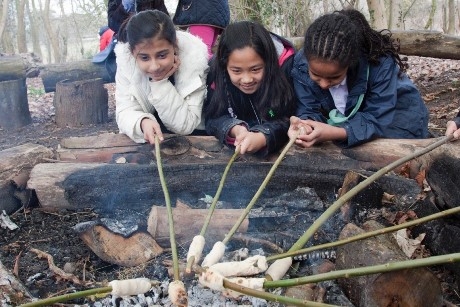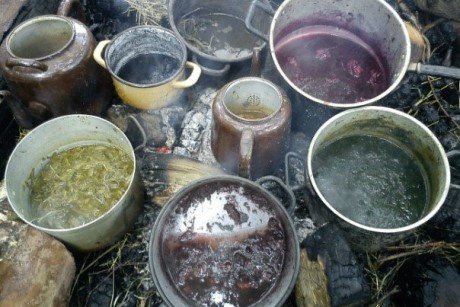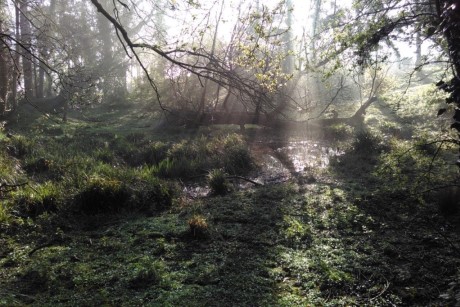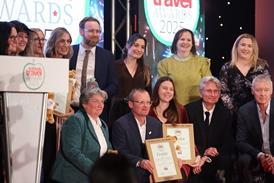Rachel Bailey spoke to Simon Paylor, the centre director at Ringsfield Eco Activity Centre in Suffolk, about the importance of outdoor learning for children of all ages.

Ringsfield Eco Activity Centre is a 14.5-acre site that provides children with the chance to connect with nature through educational activities.
Both day trips and residentials are available (there’s a large Victorian house on site), and the centre caters for Key Stages 1 to 4.
What pupils do here depends on the Key Stage and the desired learning outcomes. For example, one class might embark on a 5-night Wild Week experience, which involves survival skills and Darwin-style data collections, while another class might experience a single-day of team building exercises.
All trips will include activities that are linked to the National Curriculum.
Three other concepts have been used by the education department to inform the learning opportunities at the sight.
Simon Paylor, centre director, explained to me that Ringsfield infuses its educational programmes with a Forest School ethos as much as possible.
The ethos is based on young people’s capacity to instigate, test and maintain curiosity in the world around them. It encourages learning by using the outdoors as resource.
Additionally, Simon continued, the educational programmes at Ringsfield draw on elements of Eco-Therapy (nature-based programmes that can support wellbeing).
Plus, Ringsfield is one of the only centres in the UK that runs residential Earth Education programmes.

Pictured: There are a number of resources to aid outdoor learning at Ringsfield.
These particular programmes encourage children to live harmoniously with the natural world.
Understanding how ecosystems work; respecting the earth and its life forms; and learning how to reduce personal impact on natural resources are all part of the activities.
Simon said: “From these three foundations we offer differentiated programmes to a variety of groups and age ranges, using the space and hospitality here to reconnect children and young people with themselves, others and the world around them.”
I queried further about Earth Education. Simon explained that the Earth Education programmes are especially good at providing immersive learning experiences of discovery that feel ‘really magical’.
He said: “They might combine Drama, props and nature work to embed key ecological principles. These programmes help to empower children to take better care of our world and encourage others to do the same.”
One of these programmes is called Shipwrecked. The activity places students in the middle of an island with limited resources and the need to work tightly together to survive.
Simon described it as excellent, for developing team work and communication skills. It also hits many PSHE targets.
Another learning programme is called Stone Age Day. For this, children will meet two characters in the woods who are cradling moss filled with hot embers. The students will then take a journey around the grounds with these two historical re-enactors.
The class will also learn about a Stone Age camp, and engage with foraging, shelter building, and campfire cooking. The day finishes with natural paint-making and painting in Stone Age style.

Pictured: Learning on a Stone Age Day.
Other programmes, meanwhile, better match Geography, Science, English and Maths, or can help to build the capacity of students with particular challenges or needs. Other curriculum links include History, Art and occasionally RE.
As well as the subject-specific programmes, there are number of activities and resources at the Ringsfield site for schools to take advantage of.
Whether on a day visit or a residential, children of all Key Stages and abilities have access to feeding animals at the centre (chickens, pig, sheep, guinea pigs, goats) as well as the use of the art barn, games room, chapel, campfires, and emerging music studio.
Simon also pointed out that there is the freedom to explore the 14.5 acres of woods and grounds; the use of costume and prop for Drama studies; the chance to learn survival skills; and child-led and child centred activities that aim to re-connect children with the world around them.
Outside there is also a tree house and a small obstacle course; and football and volleyball pitches.
Are there any resources for teachers? I asked.
“While teachers are here onsite, there’s space to observe, participate and come alongside pupils as our team lead the activities,” said Simon.
“We also provide resources and materials to further embed learning when back in school, and we offer training for outdoor education for teachers in school or on site.”

Pictured: Students should be able to reconnect with the natural world during a visit.
Simon finished by reiterating how Ringsfield is more than just a physical experience.
“The space we create for learning is certainly physical, from the grounds, resources and hospitality to the food and homely place to stay. But it’s also an emotional and psychological space.
“We believe that any educational visit, whether at Ringsfield or elsewhere, should combine these elements of physical and emotional wellbeing. It’s so important to create a space to disconnect from screens and reconnect with each other, with nature, and with ourselves; to encourage creativity, questions and character building.
He said: “We’ll continue to offer these kinds of learning experiences all year round. Our vision and ambition is that they should not only remain relevant to an ever-changing curriculum, but also encourage the children to engage with the development of a sustainable future.”










